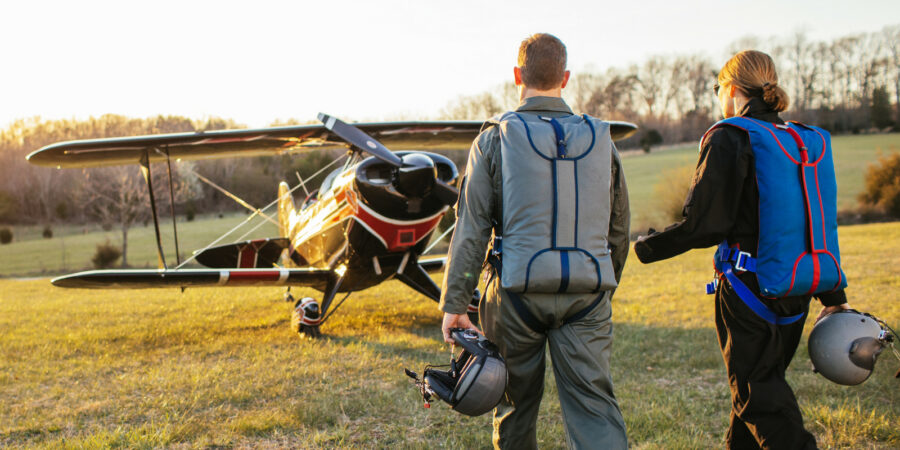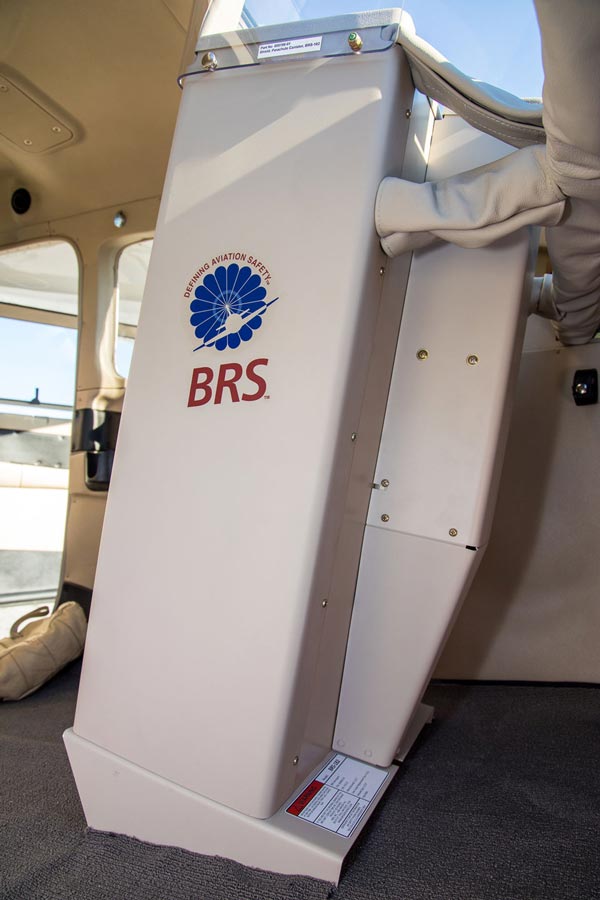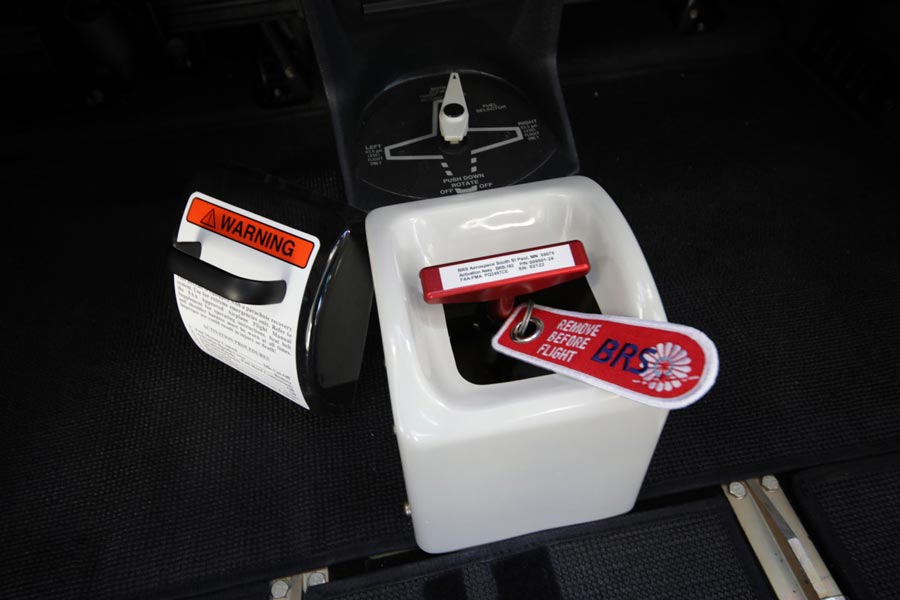Do Airplanes Have Parachutes?
19 October 2022 | Updated on February 05, 2024
Parachutes are essential equipment for people who fly military airplanes or whose jobs involve jumping out of an airborne aircraft. But whenever I buckle myself into an airline seat before takeoff, I wonder do airplanes have parachutes. Of course, I know some planes do have parachutes. But I guess my actual question should be, why don’t all airplanes have parachutes?
For context, all cars have seatbelts (and the majority have airbags), and all vessels carry life jackets, which are essential lifesaving equipment – like a parachute. If similar safety rules are applied to airplanes, then you (and all passengers) should be wearing a parachute during your next flight to visit grandma.
However, the reality is that not all airplanes have parachutes, including large commercial airliners carrying hundreds of passengers. It is mindboggling knowing that parachutes save lives during airborne emergencies – like seatbelts during a car crash and lifejackets when a boat capsizes.
In this article, we try to answer your question on whether airplanes have parachutes.
Do Airplanes Have Parachutes?
The short answer is, not all planes have parachutes. Some airplanes carry individual parachutes for the pilot or passengers for specific reasons, and a very small number of aircraft are even equipped with a built-in parachute for the entire aircraft, which the pilot can deploy in an emergency with a lever in the cockpit. In general, however, most aircraft flying around today do not carry any parachutes on board at all.
Individual parachutes
Commercial planes – do not carry individual parachutes for obvious reasons, which include cost, weight, and aircraft design. You need several hours of training before deploying a parachute successfully, a skill most passengers do not have. Parachutes on board an airliner might interfere with the aircrew safety procedures during an airborne emergency, creating additional safety problems. You never know when someone in a panic will deploy a parachute inside the cabin!
Small planes – In practice, smaller airplanes owned by individuals or organizations do not parachute for the pilot or passengers. But some do, depending on their use. Private jets do not have parachutes, but small firefighting or smoke-jumper aircraft have parachutes that deliver smoke-jumpers and their equipment to wildland fires. Aerobatic and glider pilots typically wear a parachute as well for safety reasons.
Military planes – most military aircraft, including fighter jets and bombers, have multiple parachutes on board. Military pilots and aircrews wear large parachutes and harnesses that integrate into the airplane seats. Military aircraft with parachutes are designed to allow mid-air personnel evacuation during airborne emergencies where bailing out of the airplane offers the only chance of survival.
Whole airplane parachutes
Commercial planes – for decades, airplane designers have dreamt of developing a parachute capable of supporting a fuselage. But the cost and technological challenges of designing such systems are enormous. Then there is the question of cost. What will be the demand for such systems, given the relatively low incidents of commercial airplane crashes? Developing a parachute to safely slow the descent of a Boeing 747 airliner after a mid-flight malfunction may require fabric the size of several city blocks. And fitting the material to the bulkhead may mean jettisoning several safety features and compromising payload space.
A cost-effective option would be only to develop a smaller parachute for the passenger cabin. But it would mean installing explosive chargers around the heavy parts of the aircraft like the tail, wings, and engine, which could be severed and ditched during an emergency. The drawback is that aviation regulators and law enforcement are uncomfortable with the idea of having explosives on an airplane. And ditching airplane parts to save lives over a populated area won’t be an easy sell.
Small planes – whole airplane parachutes for small aircraft have been around for almost a hundred years. In 1928, Hollywood stunt pilot Roscoe Turner deployed the whole-airplane parachute on his Lockheed Air Express for thousands of spectators and landed safely. Some small airplane makers install parachute recovery systems on their aircraft. However, such systems are currently limited to airplanes carrying up to five passengers.
Military planes – for now, we do not know any military aircraft with whole parachutes. However, that does not mean one doesn’t exist in a top-secret air base.


Why don’t commercial airplanes have parachutes?
We shall address several reasons here why commercial aircraft do not have parachutes. Although commercial planes flying over sea routes have life jackets under every seat, it is odd that they refuse to pack parachutes for every passenger. But for whatever reasons you may think, it is not for lack of regard for human lives.
Here are several reasons why commercial airplanes do not have parachutes.
- It takes several practice jumps and hours of training before you can successfully parachute solo from a moving aircraft.
- Parachutes are heavy, weighing an average of 31 pounds (41kg) apiece. Multiply that by more than three hundred, and you could easily add an extra three tons to an aircraft’s weight. The excess weight reduces an aircraft’s fuel efficiency resulting in higher ticket prices.
- Parachuting out of a commercial airplane can result in fatalities due to high airspeeds. Most commercial planes (even stricken ones) fly at an average speed of 500 miles per hour (804.6 km/h). Meanwhile, the safe airspeed for skydiving is 150 miles per hour (241.4 km/h)
- Commercial aircraft operate at high altitudes of around 35,000 feet with freezing temperatures and low oxygen levels. You will need to wear an oxygen mask and tank to survive a jump at such an extreme altitude. In contrast, ideal skydiving altitudes range between 10,000 feet and 13,000 feet.
- In practice, the chances of a successful and orderly mid-air evacuation of hundreds of passengers from a crashing airplane are impossible. You must consider that most airplanes crash within a few minutes of the pilots realizing something is wrong. And getting hundreds of people to don parachutes (many for the first time) properly, leave their seats, move to the cabin doors, and jump before the plane crashes is impracticable.
- Skydives happen only during ideal atmospheric conditions to prevent injuries or fatalities. Commercial flights are planned through all types of weather conditions that are not suitable for a sky jump.
- Commercial flights have very high safety records, with very few mishaps and fatalities per number of flights. It makes the argument for installing parachutes on commercial planes unnecessary.
- Airlines view parachutes as an impractical and unnecessary expense and would rather spend money designing more safety features to prevent airplane crashes than buying parachutes.
- Putting parachutes will mean redesigning or removing (at high costs) most safety features on airplanes to allow a mid-air evacuation. For example, emergency doors on commercial planes do not open mid-flight to prevent sudden cabin de-pressurization.
Do small planes have parachutes?
A feature on some modern small planes is the ballistic parachute system, designed to slow an airplane’s ground descent following a malfunction and prevent a crash. Although the technology has been around for almost a century, it began gaining wider acceptance during the past few decades.
Bob Fronius, a pilot, and parachutist was one of the earliest people to install parachutes on an aircraft. In 1948, Bob fitted a parachute to his JR-V Robin sailplane and deployed it successfully. He would also include and deploy a parachute from his J-3 Piper Cub the following year.
Modern whole airplane parachutes, known as ballistic chutes, are worth the expense because they deploy rapidly and have saved hundreds of lives. However, the drawbacks to the system are its cost and weight, and the technology is currently limited to airplanes with no more than five seats.


A Cirrus SR22 safely touched down thanks to its built-in CAPS parachute system. (Soruce: Flyer.co.uk)
Small planes with built-in parachutes
Aircraft with an airframe parachute system are not very common, with only a handful of aircraft models leaving the factory with such a system installed. The most well-known examples are the Cirrus SR20 and SR22 single-engine airplanes, which are all standard equipped with the Cirrus Airframe Parachute System (CAPS).
However, plenty of other (ultralight) aircraft are retrofitted with a parachute system as well. BRS Aerospace, the world’s biggest maker of whole airplane parachutes, claims more than thirty thousand deliveries of its parachute system on its website.
There’s even a possibility to install an airframe parachute system in the popular Cessna 172 and 182 models.
Photos by BRS Aerospace
Conclusion
There is little doubt that parachutes have made flying safer and saved numerous lives over time. But putting parachutes on airplanes for individual passengers isn’t practical. However, the idea of fitting whole airplane parachutes on large planes may be possible in the relatively near future, given how well they work on smaller aircraft.































